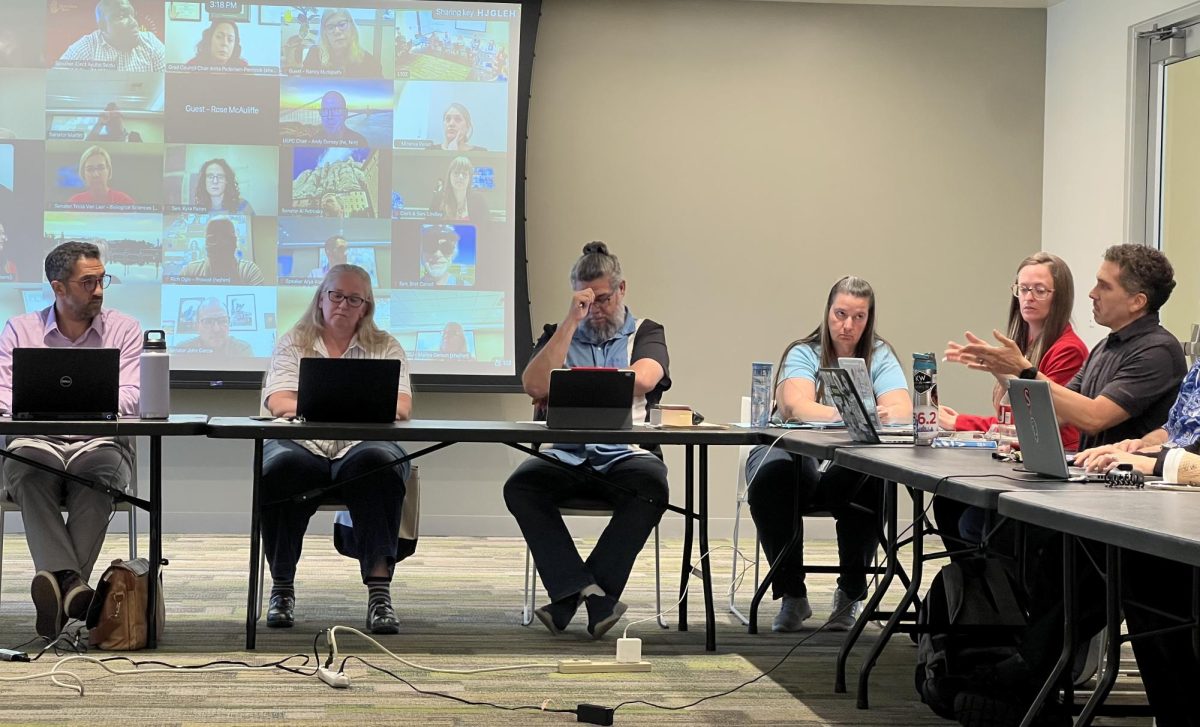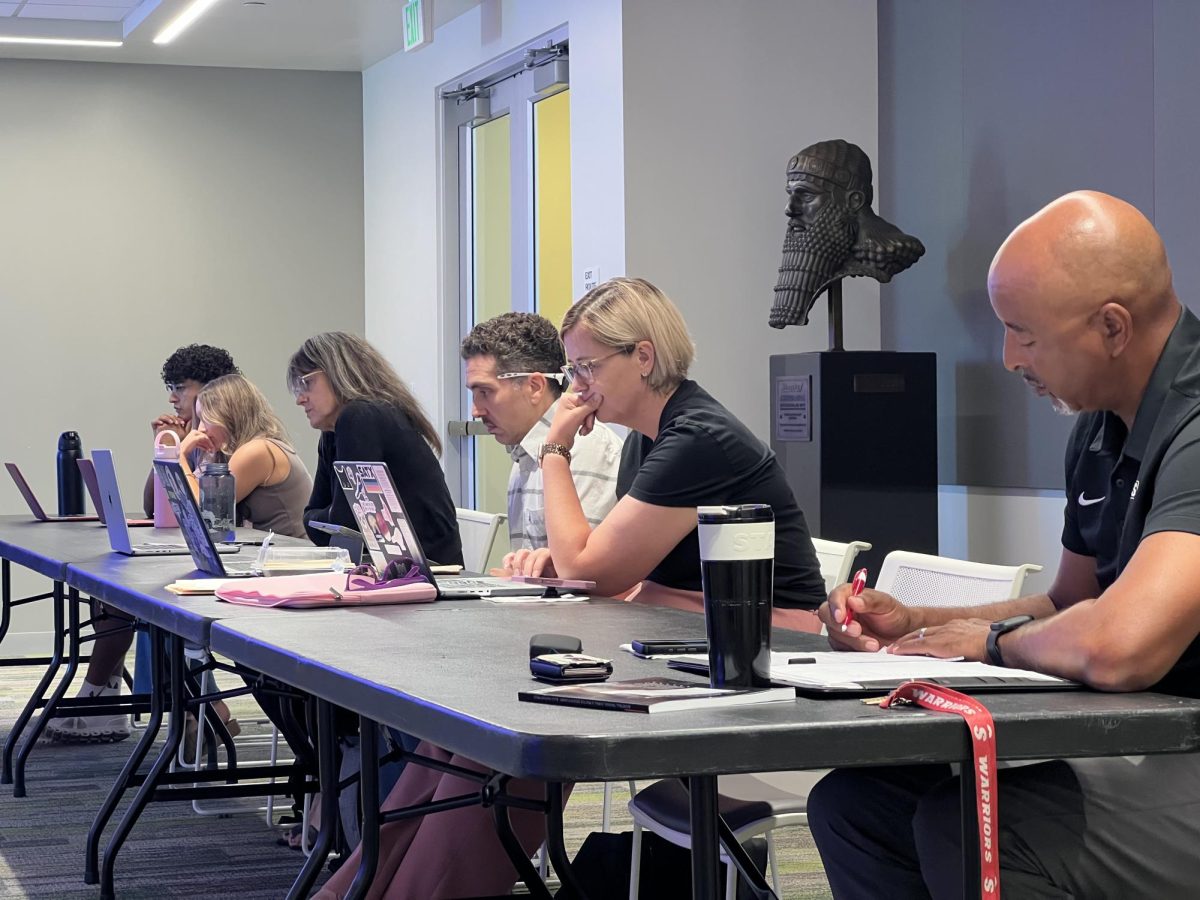March 12, 2020, is the day when every student and staff member at Stanislaus State received an email from Stan State President Ellen Junn announcing that until further notice we would no longer meet face-to-face for class due to the spread of COVID-19. While there was hope that this closure would be short lived, it is now March 1, 2021, and we are all still stuck behind our computers, deprived of not only a normal college social life but a normal college education as well.
According to an article by Kansas University, more than 1.5 billion students, or 91.3 percent of global enrollments, were directly affected by school closures at the height of the COVID-19 outbreak in early April. As we are now reaching our one-year mark of virtual online learning, thoughts and opinions may differ between students and staff about their experiences with the transition.
Jase Teoh is the director of Academic Technology, which is an office at Stanislaus State to give us seminars, workshops, and events to integrate the systemic use of technology for teaching, learning, and research. When talking to director Teoh about her thoughts on the transition process in 2020, she gave us some insight into what her office had gone through during that time.
“It was very chaotic for me because our office is so new, and we only had one staff member, plus myself,” Teoh states.
Teoh had the weight of thousands of students and staff weighing on her shoulders, looking for guidance on how to successfully transition to online learning. “Mostly they were concerned about the technology part like hardware such as hotspots and WIFI and not so much about putting their class online,” Teoh continued. “There was only concern from teachers about putting their courses online due to the fact that they never taught online ever before, those are the faculty that panic.”
Teoh continued to discuss how the faculty who panicked about the transition either didn’t know how to reach out for help for the transition or were too afraid of the idea of adapting. Teoh also mentioned how this transition was even harder for them because they were still in the process of helping students and staff fully transition from Blackboard to Canvas. So not only were students and faculty panicking about getting their classes online due to the shutdown, but they were also still struggling with the ropes of a new teaching platform they had just recently transferred to before the pandemic hit.
Being a year into the transition, Teoh said things have calmed down a bit but there’s always room for improvement. “There has been some positive feedback from faculty who were forced to learn new things due to being thrown into the pandemic and having no choice but to adapt. They realized they could do their classes quite well in a hybrid format, maybe not fully online but definitely a hybrid format.”
Professors took a big hit to the transition process not only having to worry about putting all their classes to fully online, but how to efficiently teach those transitioned classes without affecting the learning process of their students. Jessica Gomula-Kruzic, a professor of Video and Time-based Media in the Department of Art at Stanislaus State, was one of the many professors who had to transition all her courses to the online platform.
When asked about her initial reaction to the sudden announcement of the transition she said, “I did not see it coming. It happened as a surprise for most faculty members because it happened rather quickly. I think there was a lot of work I had to do to transition my classes over to online learning, but I think I am better situated then others because I was already using the online platforms for students to turn in assignments and other things.” Kruzic was one of the faculty who didn’t have to struggle as much with the technology side of things when putting all her classes online since she was already familiar with Blackboard and Canvas.
When asked how she feels about online learning now being a year in she said, “Some classes and subjects are better suited to online learning than others.” For example in the Art department, digital art is already turned in through online means whereas classes such as painting or sculpture is where you are going to run into issues. She also mentions, “Some students do better with face-to-face help where they can ask me to point something out really quick and other students do better when they have time to reflect on a project and think about their questions to post after.”
EducationData.org states in June of 2020 that 63% of students indicate that the online instruction received is worse than in-person instruction. While faculty faced the stress of figuring out how to transfer their in-person classes to exclusively online, students waited on the sidelines for the outcome of this transition. Students who had already experienced or even preferred online learning didn’t feel the full strain of the situation, but students who were full time in face-to-face classes were thrown into the deep end not knowing how to swim. Lorena Jurado (senior, Psychology) is a student at Stanislaus State. When asked about her thoughts when she first found out about the transition, she didn’t know where to start.
“At least when it came to my professors, they helped us as much as they could before we had to leave by [pointing out] to us where things were going to be online for the rest of the semester.” Jurado, like most of the students that spring semester, was able to be with her professors face-to-face for a bit in the beginning of that semester before everyone had to vacate. She continues by saying, “When the fall semester started, it was like, ’I don’t know these teachers, what is their class going to be like?’ so I was very nervous.” Once fall semester hit for students, communication between professors and students started to strain in this new environment.
“Then finding out some classes didn’t have you meet the professor at all, made me lost. I would be asking myself ‘What am I supposed to even be doing in this class? How do I do this assignment?’” Jurado explains that she felt like she had to rely on her other classmates, and them on her, to get a grasp on the subject that they were supposed to be being taught by their professor. She mentions something specific that most students have struggled with at some point- group projects. Normally students would have class time to meet their group mates for projects but now with this new online learning process, you are not only having to call and text your group mates, but you must work around everyone’s schedules.
“Things are so much harder now when it comes to things like this because in this pandemic, work, school, and home are all the same place for some people. How are we supposed to divide each of these up successfully?” Jurado goes on to voice a sentiment felt by many students. “At least when I’m on campus I don’t have to worry about home because I know when I am at school, that is all I am there for.” This is an issue a lot of students are running into due to online learning. The line between work, school, and downtime is almost non-existent for some students who are doing all of these from home with distractions surrounding them.
When asked about her thoughts on online learning now, a year later, she feels that teachers seem to be more organized with their classes compared to the first completely online semester. She says, “Now that a lot of teachers have their classes organized, the issue is the students [are] still trying to catch up with this whole process and trying to figure it out even a year later.”
Whether you’re a student or a faculty member, the pandemic has hit everyone in different ways. The online learning transition process has not been an easy one, and we are still in the process of learning and improving upon this process. Online learning may not be for everyone, but it is a future we cannot avoid. All we can do is learn from the benefits of online learning and improve upon the structure that has been built from the pandemic.
For more information or help with online learning, you can visit the Office of Information Technology or the Office of Academic Technology on the Stanislaus State Website.







